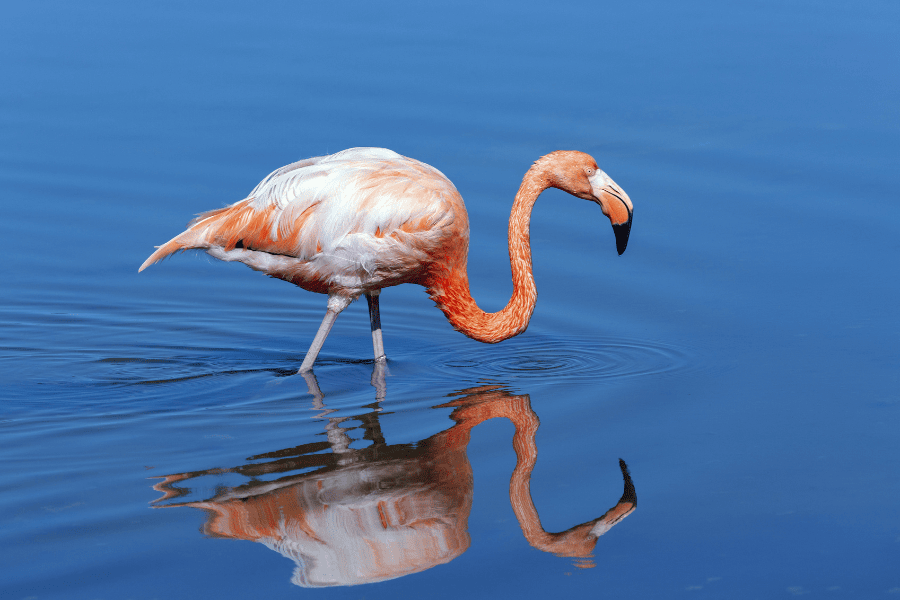
What to Do in the Galapagos Islands: 5 Excursions for Your Bucket List
Looking for things to do in the Galapagos Islands? From meeting a giant Galapagos tortoise, spotting endemic marine iguanas, and snorkeling with penguins, there’s something for everyone in this incredible archipelago. Declared a UNESCO World Heritage Site in 1978, the Galapagos are a collection of unique volcanic islands in the Eastern Pacific, located 900 km off the Ecuadorian coast.
Join us aboard Aqua Mare, the first true superyacht in the Galapagos to experience wildlife encounters and marine adventures that feel out of this world.
Snorkel with endemic marine life
Anyone wondering what to do in the Galapagos should head straight for the water. The Galapagos Marine Reserve is one of the largest and most biologically diverse marine protected areas in the world.
Nearly 20 percent of the marine life found in these islands is endemic, meaning it won’t be found anywhere else in the world. This includes the giant Galapagos tortoise (which can live for up to 150 years), marine iguana, flightless cormorant, and the Galapagos penguin — the only penguin species to be found in the Northern Hemisphere.
The Galapagos is also home to some of the most remote and awe-inspiring spots for snorkeling and diving. Aboard the Aqua Mare, there are plenty of opportunities to dive into the deep blue and come up close to marine life. Around the islands, there are opportunities to snorkel alongside sea turtles, penguins, sea lions, marine iguanas, reef sharks, rays, and brightly colored reef fish.
Explore lava tunnels on Santa Cruz Island
Santa Cruz, the second largest island in the Galapagos, is where underground explorers can discover the area’s most accessible lava tunnels. This labyrinth of complex and connecting underground tubes are formed as the outer skin of molten lava solidifies but the liquid magma inside continues flowing, leaving a series of dramatic tunnels – some stretching up to several miles long.
Explore these natural volcanic wonders and look out for Galapagos barn owls which make their home in the cool, dark caverns. Looking for more things to do in the Galapagos Islands? The highlands of Santa Cruz also host a large wild population of giant tortoises, which roam freely around the private and National Park areas.
Go whale watching at Isabela Island
The Galapagos has recorded visits from 16 types of whales, with recent sightings including blue, sperm, humpback, orca, and Bryde’s whales. Isabela, the largest of the region’s islands, is considered the prime spot to encounter these giants of the deep.

The west coast of the island is the site of the upwelling of the nutrient and oxygen rich Cromwell current, that offer a fish and plankton feeding ground for whales and other marine animals. The best time of year to see Galapagos whales is between June and October when they’re spotted breaching in the channel between the islands of Isabela and Fernandina.
Although whale sightings are rare, the Aqua Mare crew is always on the lookout for these magnificent creatures. If spotted while sailing, we’re sure to take a pitstop and head over to the sundeck for a better view.
Learn about Galapagos’ history at Floreana Island
This sparsely-populated island of just a few hundred people is famed for its colorful history of whalers, convicts, buccaneers and early colonists. Named after Juan José Flores, the first president of Ecuador, Floreana Island is the site of the Galapagos first ‘post office’. Guests on Aqua Mare can visit Post Office Bay, which was established in 1793 by Captain James Colnett as an informal way for whalers to get messages to loved ones back home. Leave your own postcard or letter as a nod to this quirky piece of history.

Floreana is also a bird sanctuary – home to 350 nests of critically endangered Galapagos petrels and other endemic bird species including lava gulls, finches and Galapagos penguins. Punta Cormorant, on the northern shores of Floreana Island, boasts an olivine beach – rich with a mineral known for its olive-green quality, also found in meteorites, the moon, and Mars. A short walk from the beach is the Flamingo Lagoon, where the candy pink Galapagos flamingos strut their stuff.
One of the highlights of this area is snorkeling at Devil’s Crown, a ring of jagged rocks that jut out of the water not too far from shore. This partially-submerged crater is teeming with tropical fish, including parrotfish, wrasse, surgeonfish, and damselfish.
Visit the Charles Darwin Research Station
The Galapagos Islands are a significant part of scientific history – inspiring famed scientist Charles Darwin’s theory of natural selection and continuing to shed light on biology and evolution today.

A visit to the Charles Darwin Research Station in Puerto Ayora, Santa Cruz Island, is an opportunity to connect with the origins of evolution and discover more about the scientific significance of the Galapagos. The station and its fleet of top scientists and volunteers provide scientific and technical advice to the Government of Ecuador to ensure the Galapagos ongoing conservation. The stars of the show here, however, are the resident giant tortoises and land iguanas, which can be observed at the Fausto Llerena Breeding Center. The program at the center ensures the longevity of these creatures through captive breeding programs, which then releases them back into the wild.
Experience the untouched world of the Galapagos Islands aboard luxury superyacht Aqua Mare and interact with wildlife that has evolved with little human contact or major predators for hundreds of years. Contact our team at reservations@aquaexpeditions.com for more information on our sailings in the Galapagos Islands.



